Analysis of Interannual Anomalies and Causes of Compound Extreme Wind and Precipitation Events in Spring over the Jiangsu–Anhui Region
Abstract
1. Introduction
2. Data and Methods
2.1. Data
- The daily precipitation and wind speed observation data from stations are provided by the Information Center of the China Meteorological Administration. After removing the stations with missing data, a total of 125 stations remained, and their distribution is shown in Figure 1.
- The monthly average reanalysis data is from the National Centers for Environmental Prediction (NCEP) and the National Center for Atmospheric Research (NCAR), and the elements used are geopotential height field, wind field, precipitable water, and vertical velocity, with a horizontal resolution of 2.5° × 2.5°.
2.2. Definition of the Compound Extreme Wind and Precipitation Events
2.3. Hodrick–Prescott Filtering Method
3. Results and Analysis
3.1. Spatial Distribution Characteristics
3.2. Temporal Distribution Characteristics
3.3. Circulation Background of Interannual Anomalies
4. Conclusions
- The spring compound extreme wind and precipitation events in the Jiangsu–Anhui region presents a distribution pattern of less in the south and more in the north. Stations south of 32° N are mostly below three days, while stations north of 32° N are mostly above three days; moreover, some stations in northern Jiangsu are over four days.
- The frequency of spring compound extreme wind and precipitation events experienced an interdecadal mutation from more to less in the early 1990s. This kind of interdecadal variation covered the entire Jiangsu–Anhui region, and the decrease was more significant in the coastal area of northern Jiangsu with the highest frequency.
- The characteristics of the compound height anomaly field at 200 hPa and 500 hPa in high-frequency years are the following: north of 45° N is a positive anomaly while south of 45° N is a negative anomaly. This circulation background enhances the high pressure in high latitudes and increases the meridional direction of the circulation, which is conducive to the activity of high-latitude short-wave trough ridges and frequent cold air activity. Corresponding to 850 hPa in the middle and low latitudes, a strong southwest air flow travels from the Bay of Bengal to the Jiangsu–Anhui region. The convergence of abundant water vapor with southward cold air in high latitudes is conducive to the occurrence of extreme events. At the same time, the precipitable water in the Jiangsu–Anhui region is located at the center of the high anomaly value, corresponding to a larger vertical velocity above the sky and a stronger convective development, which promotes the occurrence of compound extreme wind and precipitation events more easily.
- In the low-frequency years, a consistent negative anomaly is presented in the middle- and high-latitude regions, especially in the vicinity of the Jiangsu–Anhui region with a high-value area for the negative anomaly, which weakens the high pressure in the high-latitude regions and reduces the meridional circulation degree, so it is not conducive to the southward movement of cold air. It is difficult for cold and warm airflow to converge in the Jiangsu–Anhui region. The reduction in the frequency of precipitation and the corresponding gale events leads to a decrease in compound extreme wind and precipitation events. Most areas south of 40° N at 500 hPa and 850 hPa are dominated by easterly anomaly advection. There is no effective water vapor transportation belt in the middle and low latitudes. The water vapor transportation belt from the Bay of Bengal to the Jiangsu–Anhui region is weak, so the water vapor transportation conditions are poor. The precipitable water in the Jiangsu–Anhui region is significantly less than the average climatic field. The vertical velocity over the northern part of the Jiangsu–Anhui region is the center of a positive anomaly, and the weak convective motion is not conducive to precipitation; moreover, it is also difficult to form thunderstorms and gale weather, and the corresponding compound extreme events decrease relatively.
Author Contributions
Funding
Institutional Review Board Statement
Informed Consent Statement
Data Availability Statement
Conflicts of Interest
References
- IPCC. Climate Change 2021: The Physical Science Basis; Cambridge University Press: Cambridge, UK, 2021. [Google Scholar]
- Smits, A.; Tank, A.; Knnen, G.P. Trends in Storminess over the Netherlands, 1962–2002; John Wiley & Sons, Ltd.: Hoboken, NJ, USA, 2005; Volume 10. [Google Scholar]
- Pryor, S.C.; Barthelmie, R.J.; Riley, E.S. Historical evolution of wind climates in the USA. J. Phys. Conf. Ser. 2007, 75, 012065. [Google Scholar]
- McVicar, T.R.; Van Niel, T.G.; Li, L.T.; Roderick, M.L.; Rayner, D.P.; Ricciardulli, L.; Donohue, R.J. Wind speed climatology and trends for Australia, 1975–2006. Geophys. Res. Lett. 2008, 35, L20403. [Google Scholar]
- Wang, Z.; Ding, Y.; He, J.; Yu, J. An updating analysis of the climate change in China in recent 50 years. Acta Meteorol. Sin. 2004, 62, 228–236. (In Chinese) [Google Scholar]
- Wang, X.; Zhai, P. The spatial and temporal variations of spring dust storms in China and its associations with surface winds and sea level pressures. Acta Meteorol. Sin. 2004, 62, 96–103. (In Chinese) [Google Scholar]
- Jiang, Y.; Luo, Y.; Zhao, Z.; Tao, S. Changes in wind speed over China during 1956–2004. Theor. Appl. Climatol. 2010, 99, 421–430. [Google Scholar]
- Ren, G.; Guo, J.; Xu, M.; Chu, Z.; Zhang, L.; Zou, X.; Li, Q.; Liu, X. Climate changes of China’s mainland over the past half century. Acta Meteorol. Sin. 2005, 63, 94–956. (In Chinese) [Google Scholar]
- Xu, M.; Chang, C.P.; Fu, C.; Qi, Y.; Robock, A.; Robinson, D.; Zhang, H.M. Steady decline of East Asian monsoon winds, 1969–2000: Evidence from direct ground measurements of wind speed. J. Geophys. Res. 2006, 111, 1–8. [Google Scholar] [CrossRef]
- Yi, L.; Weijun, Z.; Fumin, R.; Xin, W. Changes of tropical cyclone high winds and extreme winds during 1980–2014 over China. Clim. Chang. Res. 2016, 12, 413–421. (In Chinese) [Google Scholar]
- Wang, Y.; Zhou, L. Observed trends in extreme precipitation events in China during 1961–2001 and the associated changes in large-scale circulation. Geophys. Res. Lett. 2005, 32, L09707. [Google Scholar] [CrossRef]
- IPCC. Summary for Policymaker; Cambridge University Press: Cambridge, UK, 2021. [Google Scholar]
- Leonard, M.; Westra, S.; Phatak, A.; Lambert, M.; van den Hurk, B.; McInnes, K.; Risbey, J.; Schuster, S.; Jakob, D.; Stafford-Smith, M. A compound event framework for understanding extreme impacts. Wiley Interdiscip. Rev. Clim. Chang. 2014, 5, 113–128. [Google Scholar] [CrossRef]
- McPhillips, L.E.; Chang, H.; Chester, M.V.; Depietri, Y.; Friedman, E.; Grimm, N.B.; Kominoski, J.S.; McPhearson, T.; Méndez-Lázaro, P.; Rosi, E.J.; et al. Defining extreme events: A cross-disciplinary review. Earth’s Future 2018, 6, 441–455. [Google Scholar] [CrossRef]
- Yu, R.; Zhai, P. Advances in scientific understanding on compound extreme events. Trans. Atmos. Sci. 2021, 44, 645–649. (In Chinese) [Google Scholar] [CrossRef]
- Hodrick, R.J.; Edward, C.P. Postwar US business cycles: An empirical investigation. J. Money Credit Bank. 1997, 29, 1–16. [Google Scholar] [CrossRef]
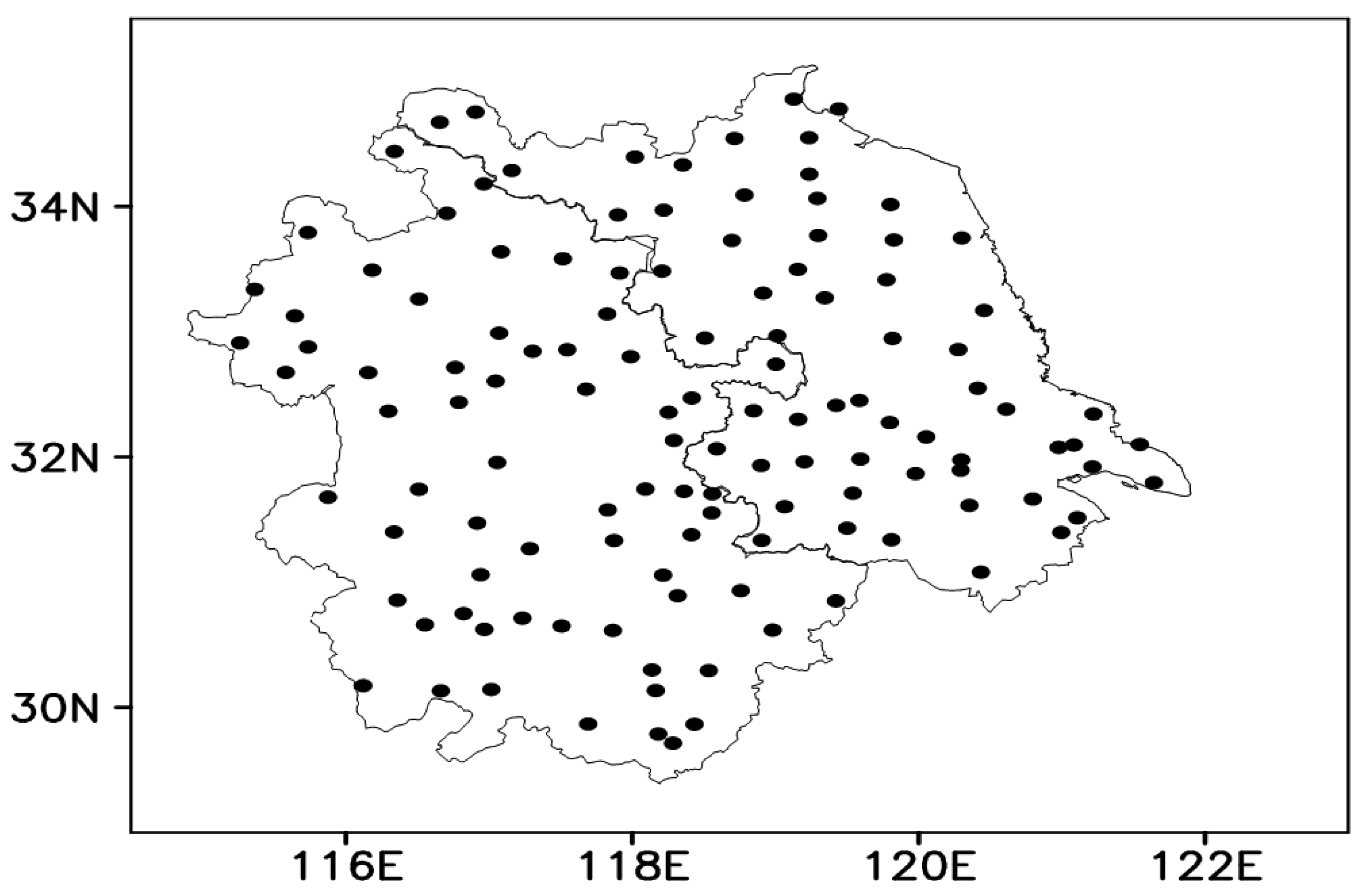
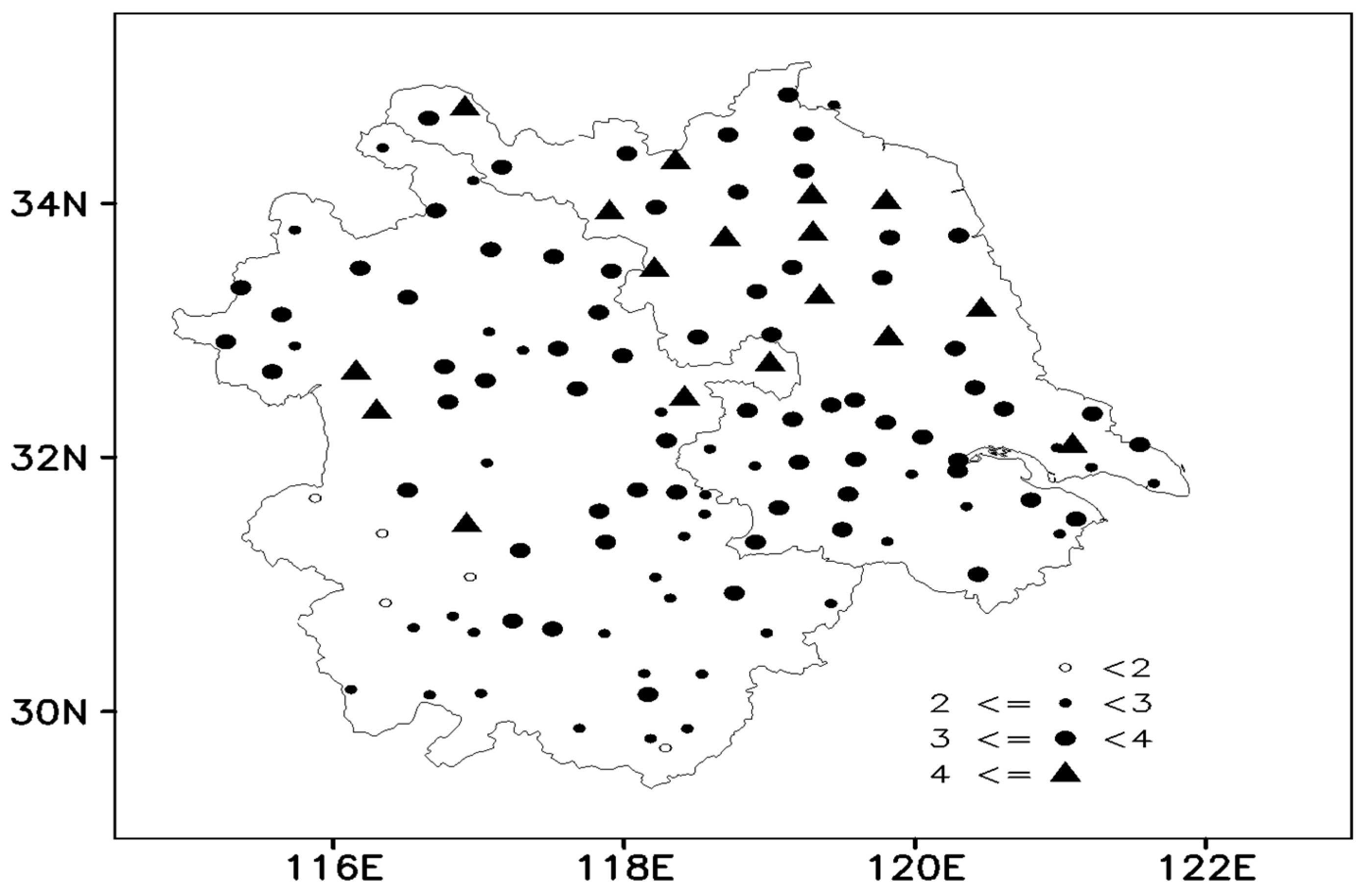
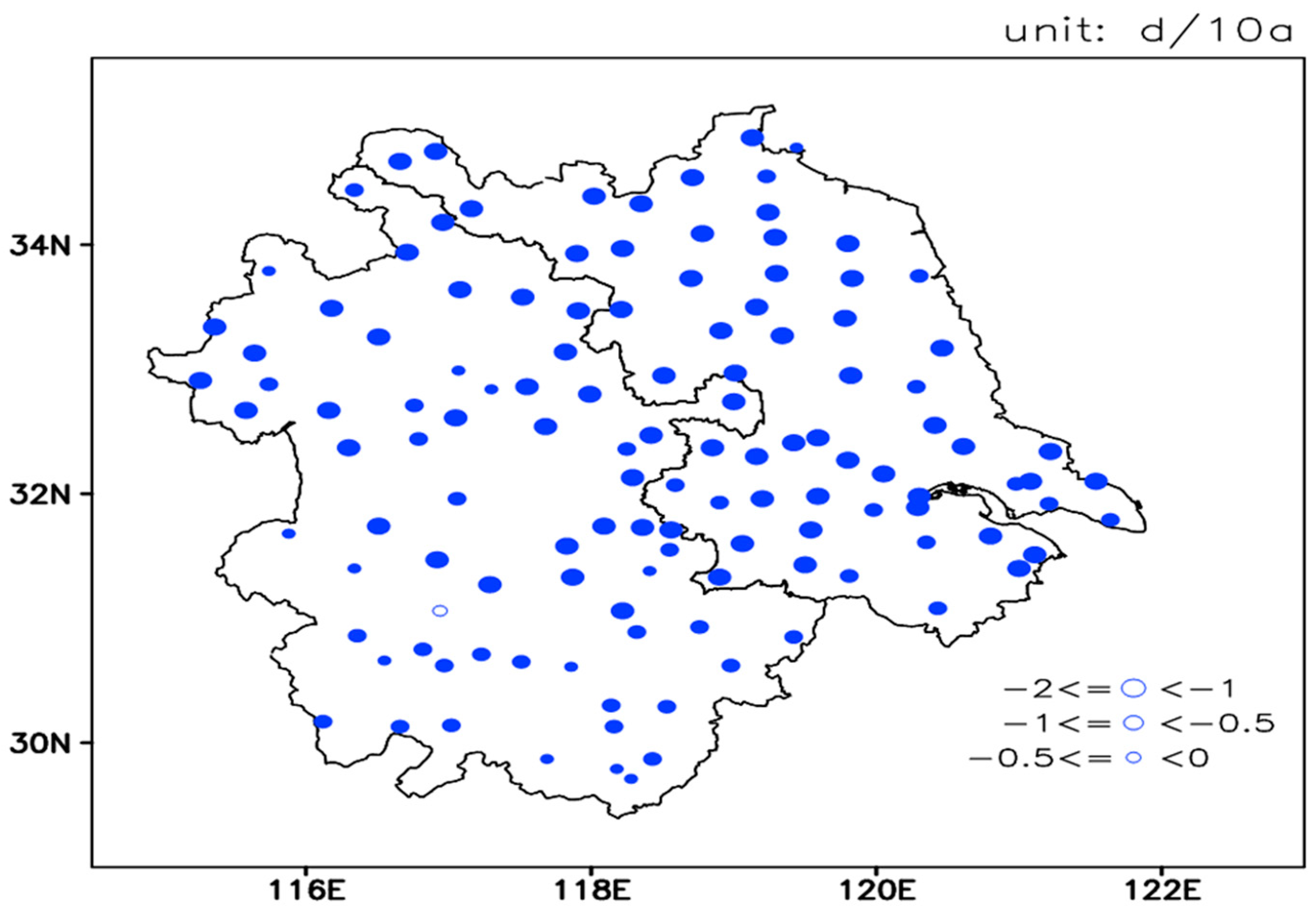
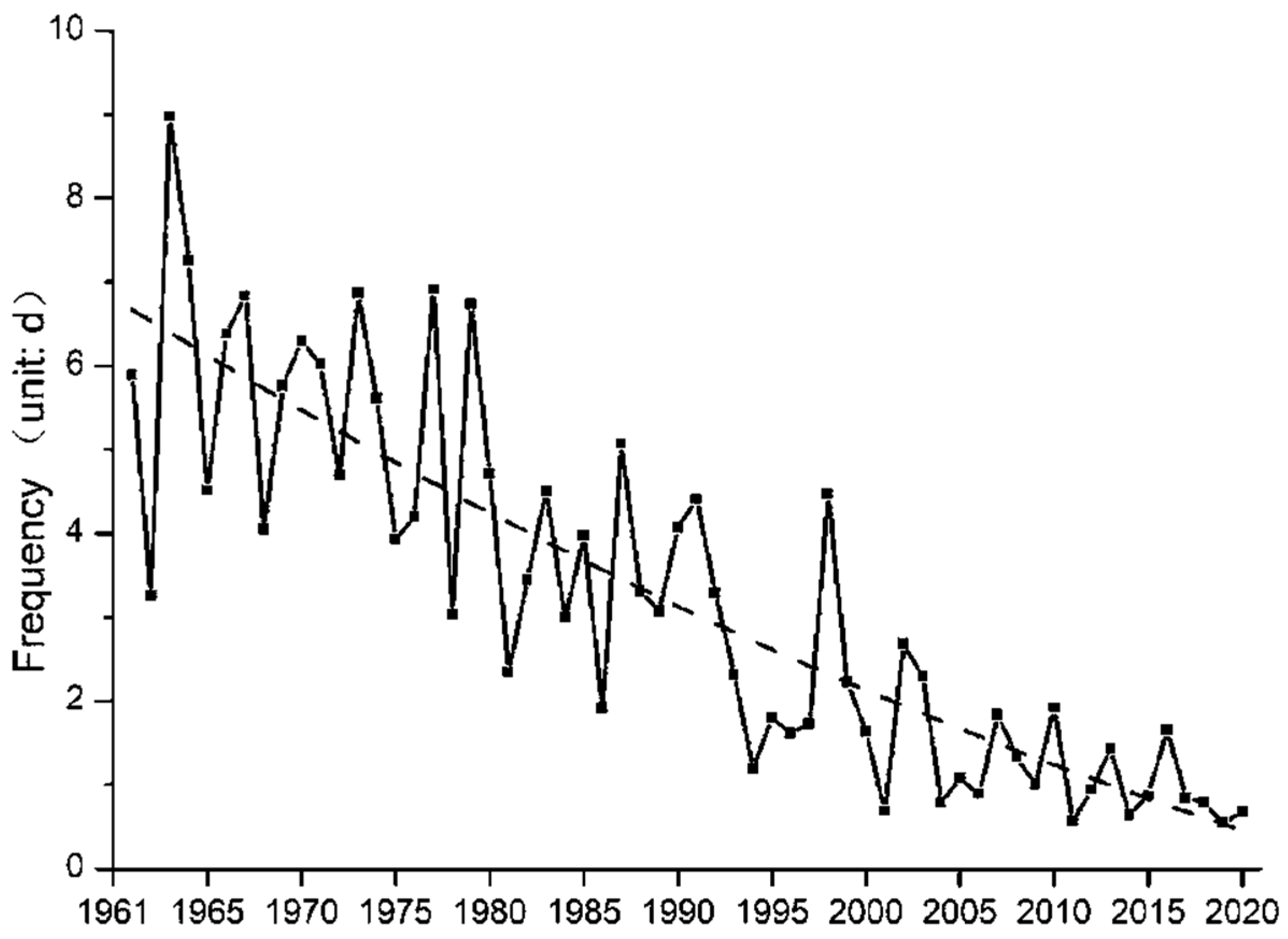
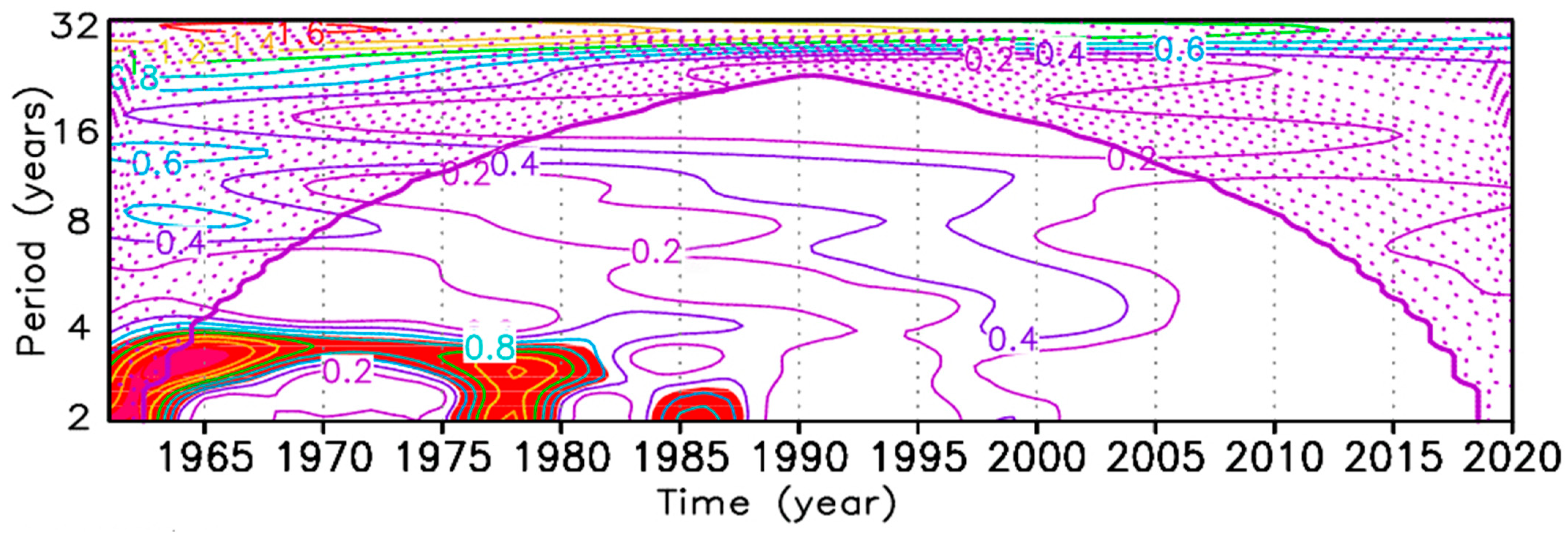
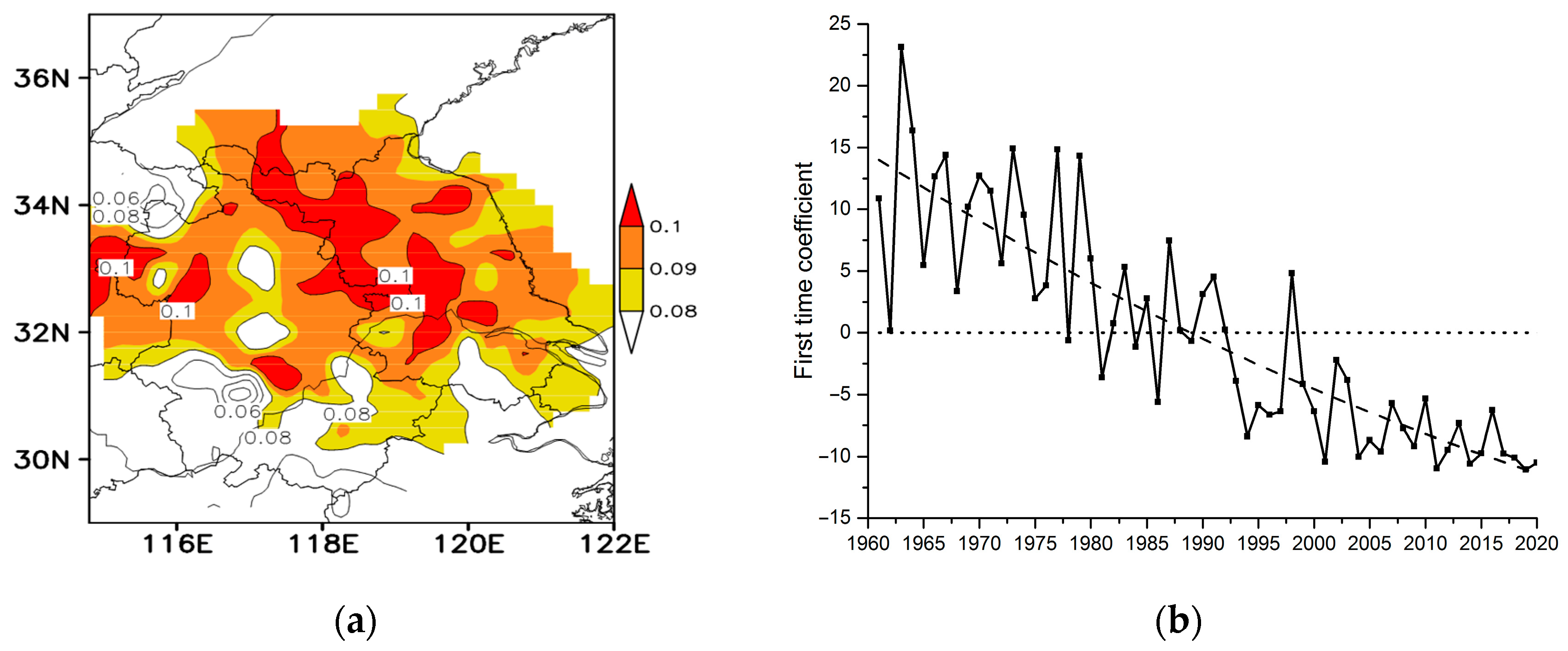
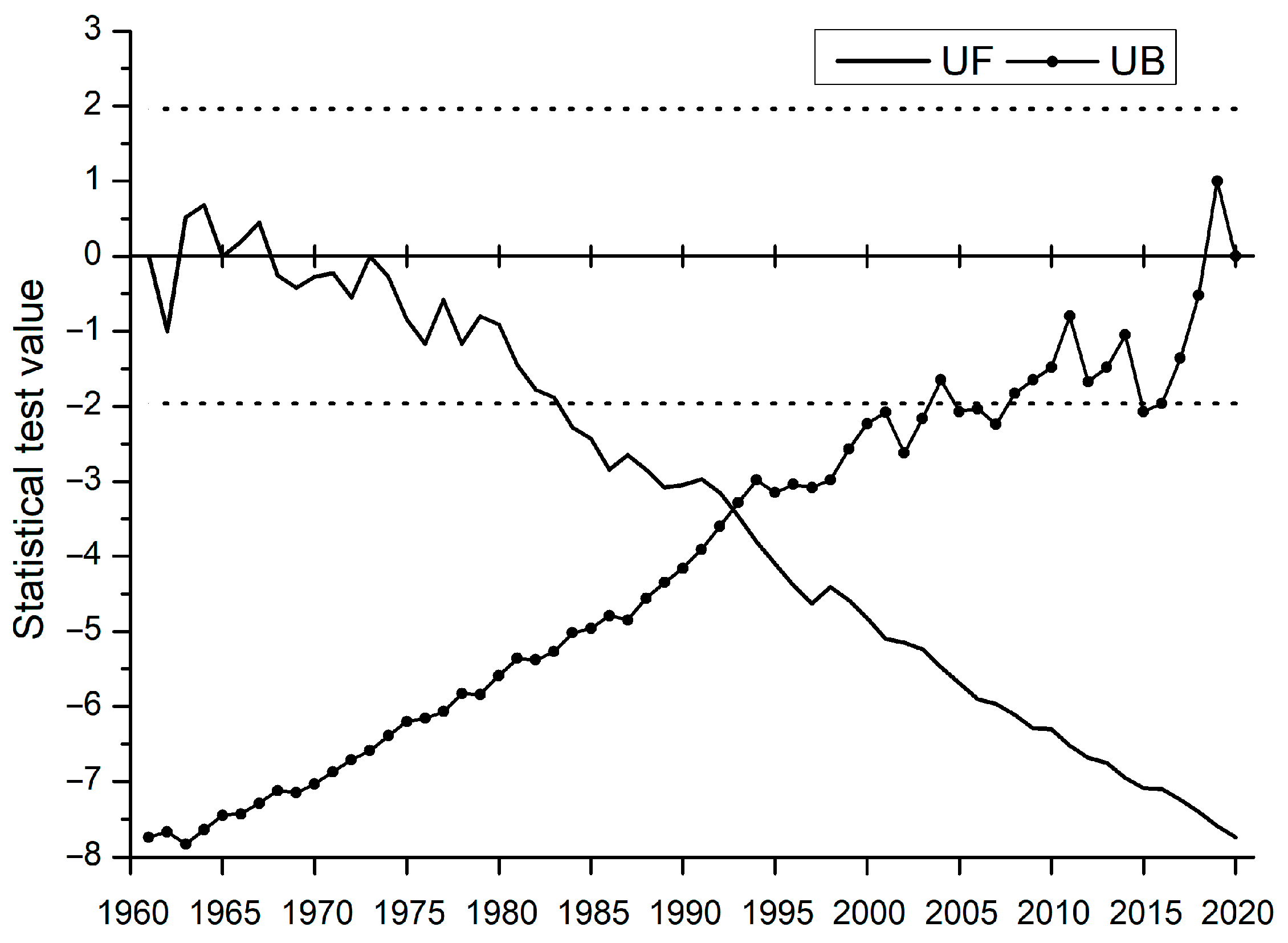
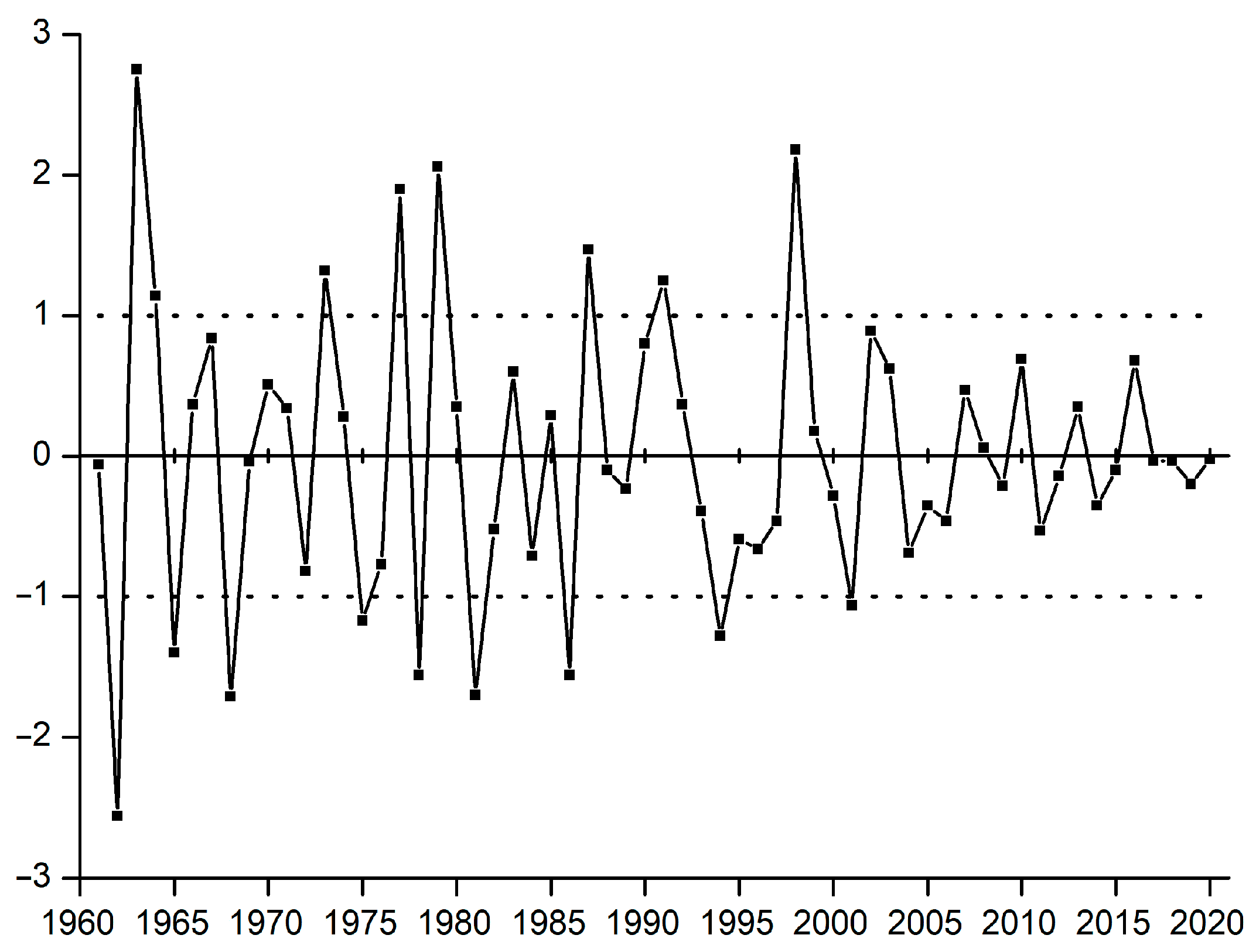
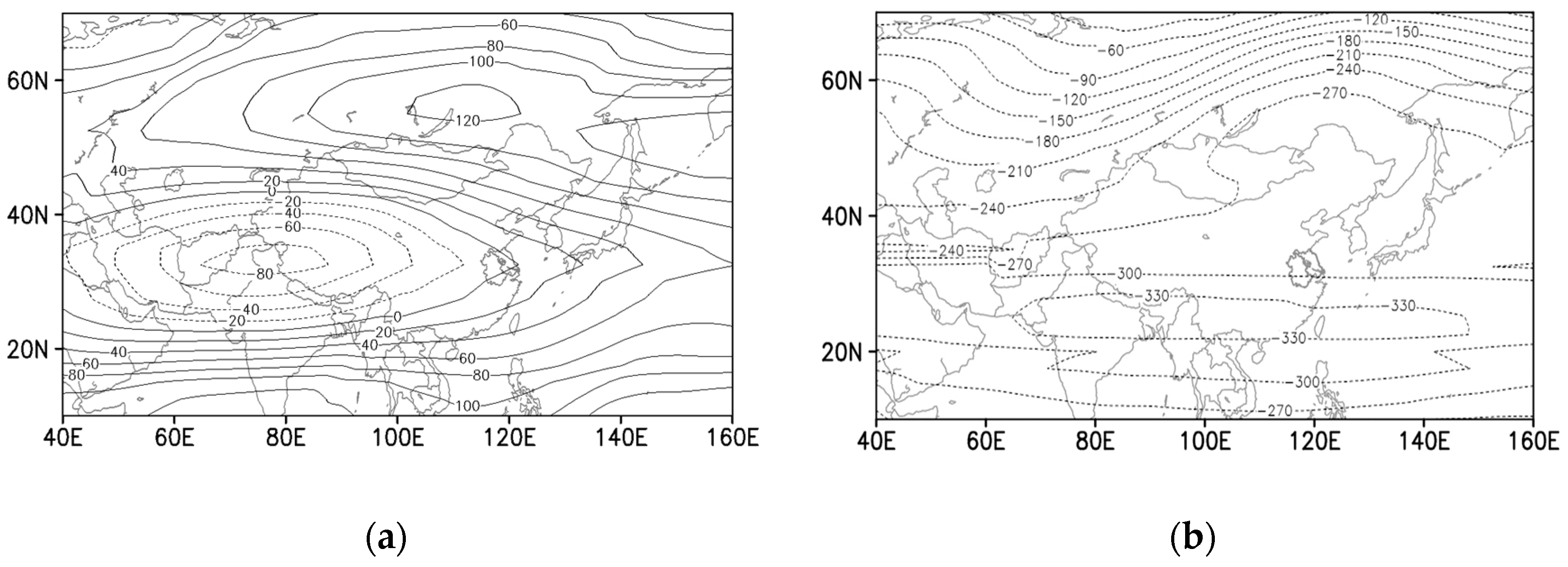

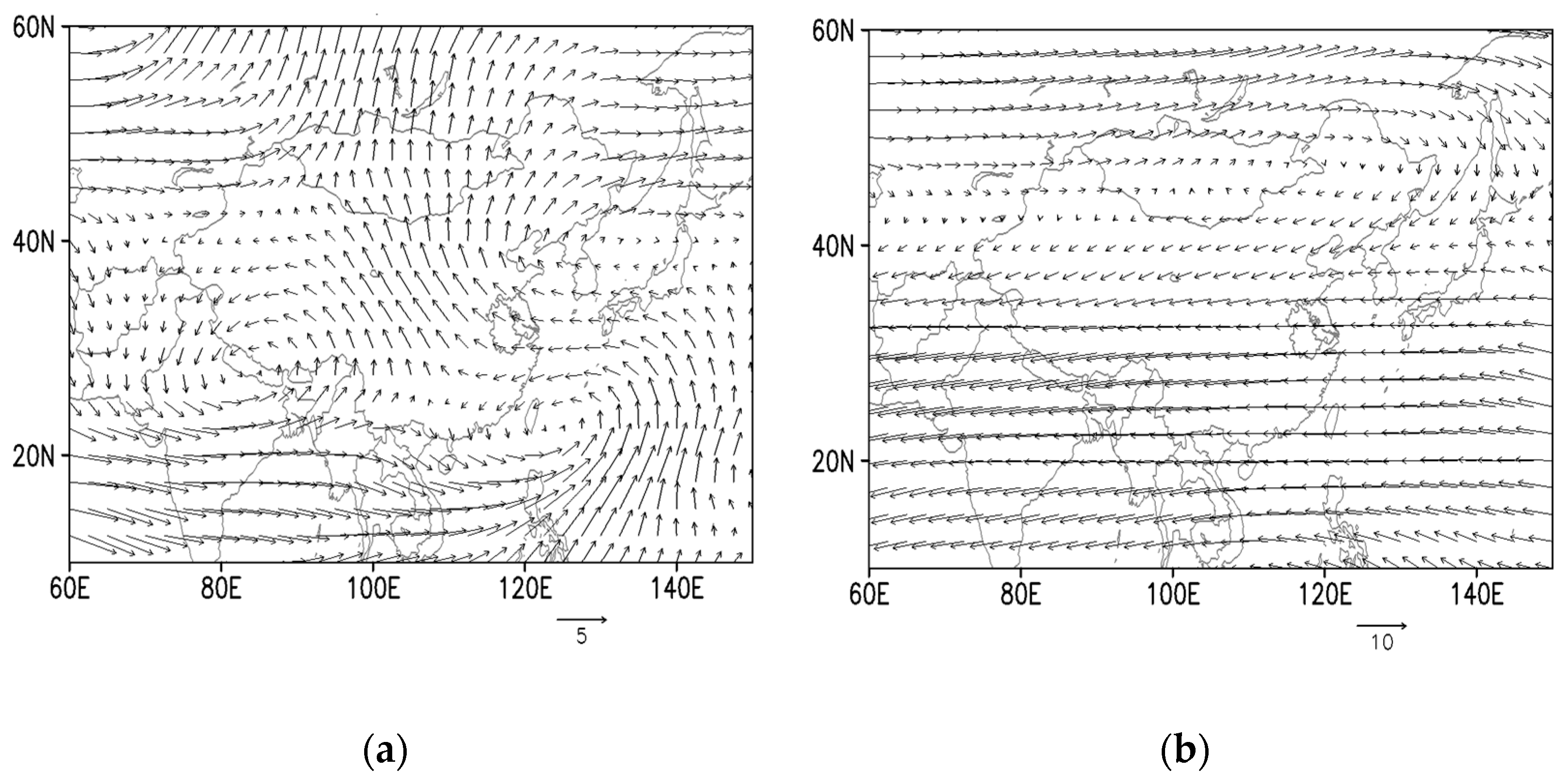
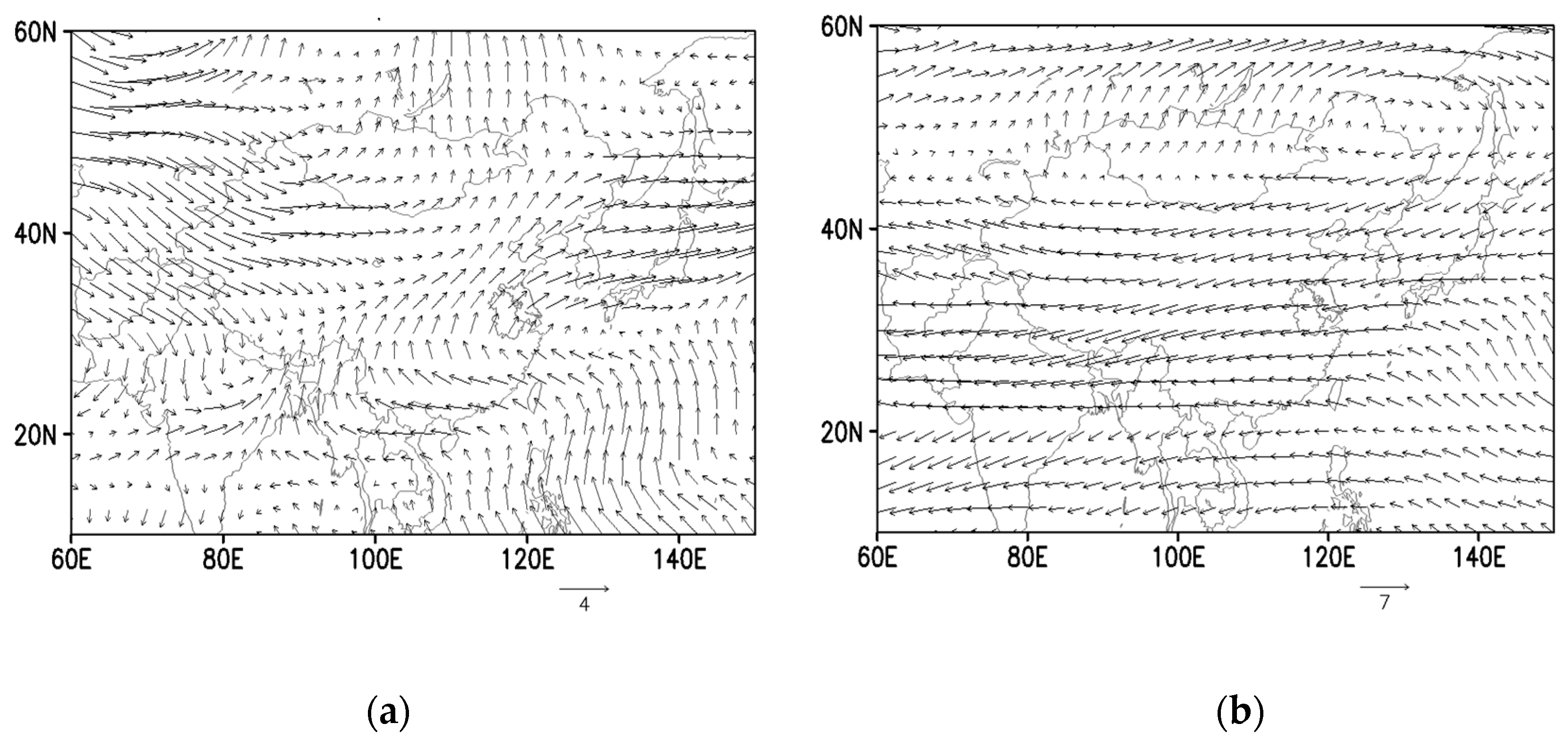
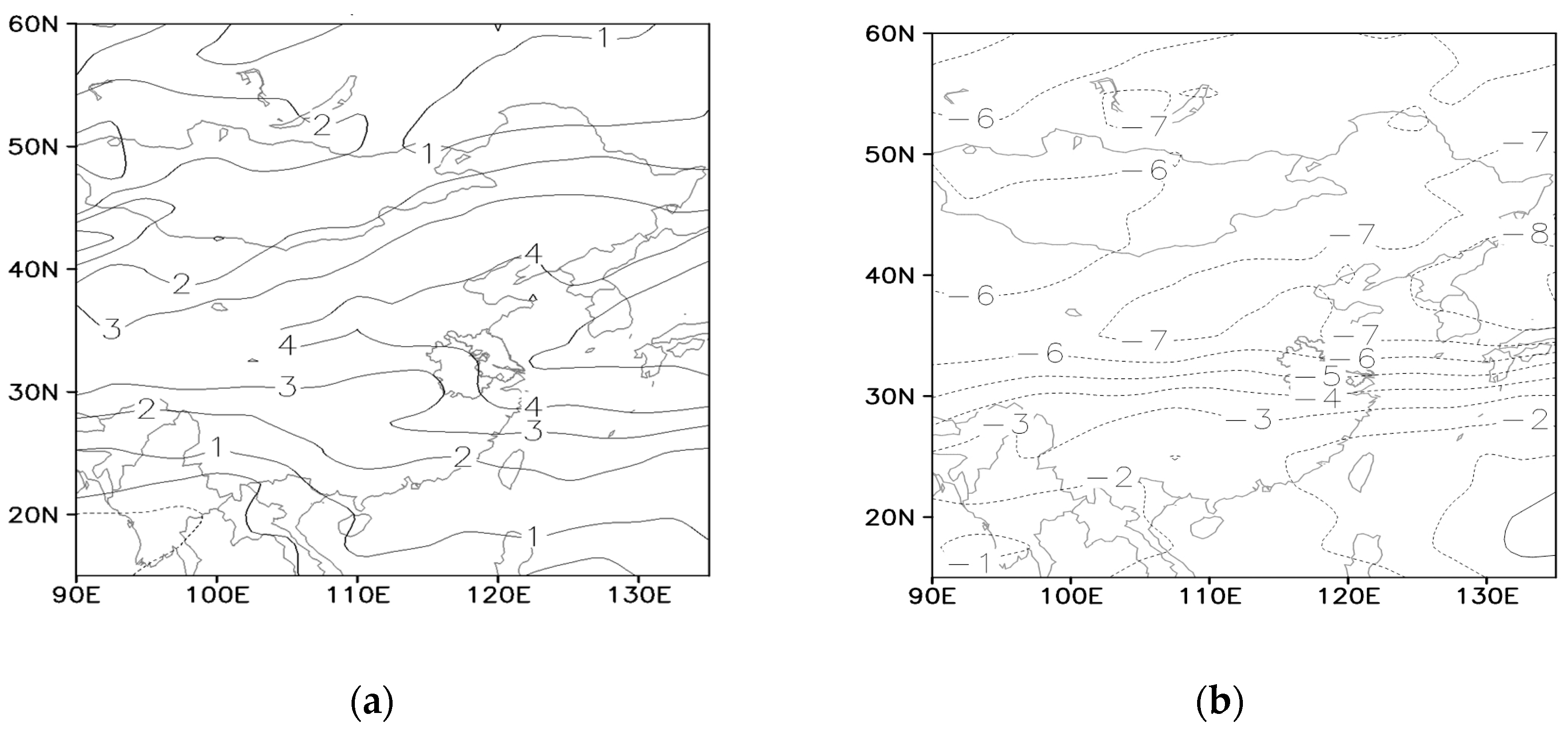
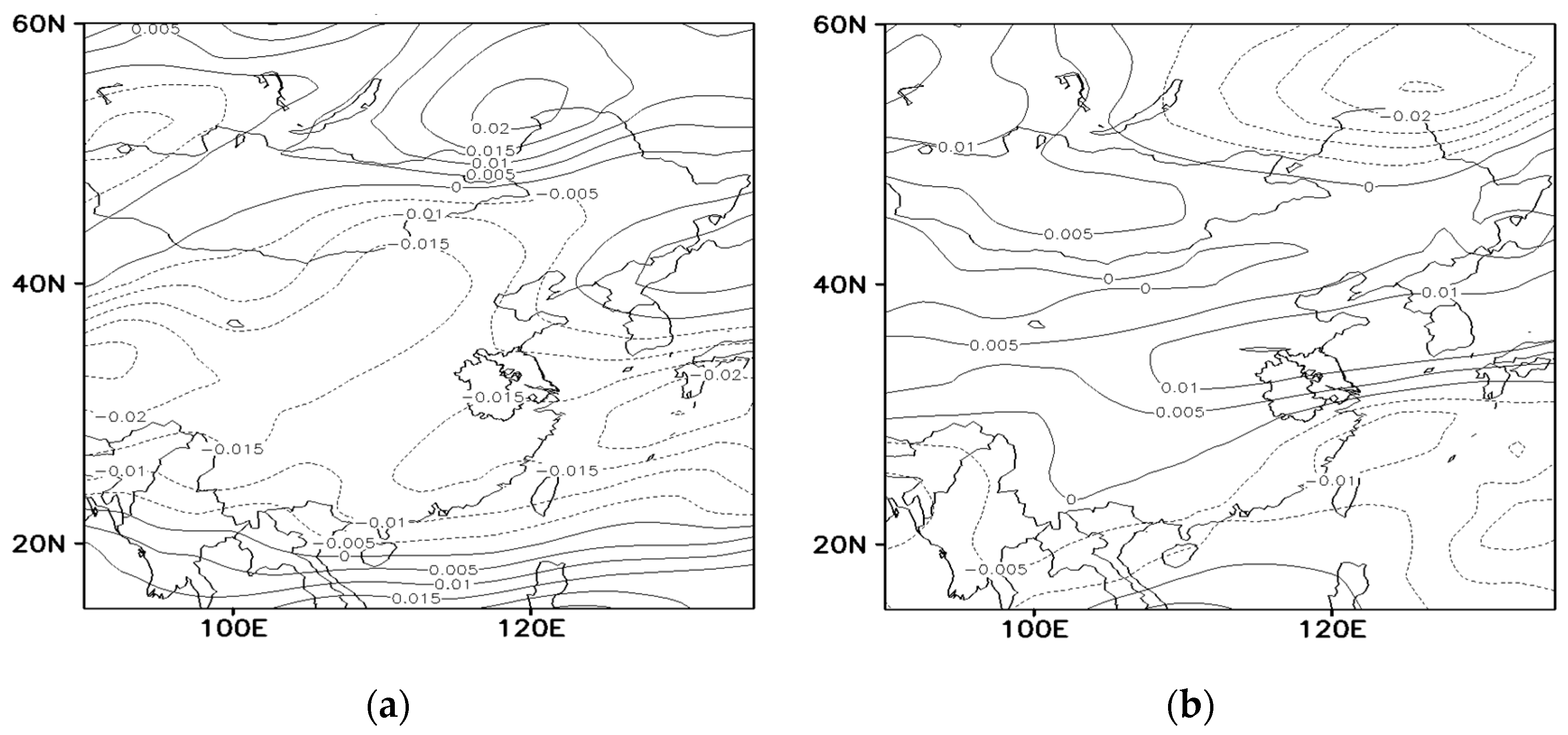
| EOF Variance Contribution | First Mode | Second Mode | Third Mode | Fourth Mode | Fifth Mode | |
|---|---|---|---|---|---|---|
| Spring | Variance contribution | 60.66% * | 5% * | 3.07% * | 2.76% * | 2.37% * |
| Accumulated contribution | 60.66% | 65.66% | 68.73% | 71.49% | 73.86% | |
Disclaimer/Publisher’s Note: The statements, opinions and data contained in all publications are solely those of the individual author(s) and contributor(s) and not of MDPI and/or the editor(s). MDPI and/or the editor(s) disclaim responsibility for any injury to people or property resulting from any ideas, methods, instructions or products referred to in the content. |
© 2023 by the authors. Licensee MDPI, Basel, Switzerland. This article is an open access article distributed under the terms and conditions of the Creative Commons Attribution (CC BY) license (https://creativecommons.org/licenses/by/4.0/).
Share and Cite
Zhou, J.; Sun, Y.; Liu, L.; Zhai, L. Analysis of Interannual Anomalies and Causes of Compound Extreme Wind and Precipitation Events in Spring over the Jiangsu–Anhui Region. Atmosphere 2023, 14, 1290. https://doi.org/10.3390/atmos14081290
Zhou J, Sun Y, Liu L, Zhai L. Analysis of Interannual Anomalies and Causes of Compound Extreme Wind and Precipitation Events in Spring over the Jiangsu–Anhui Region. Atmosphere. 2023; 14(8):1290. https://doi.org/10.3390/atmos14081290
Chicago/Turabian StyleZhou, Jing, Yan Sun, Lei Liu, and Lingli Zhai. 2023. "Analysis of Interannual Anomalies and Causes of Compound Extreme Wind and Precipitation Events in Spring over the Jiangsu–Anhui Region" Atmosphere 14, no. 8: 1290. https://doi.org/10.3390/atmos14081290
APA StyleZhou, J., Sun, Y., Liu, L., & Zhai, L. (2023). Analysis of Interannual Anomalies and Causes of Compound Extreme Wind and Precipitation Events in Spring over the Jiangsu–Anhui Region. Atmosphere, 14(8), 1290. https://doi.org/10.3390/atmos14081290





